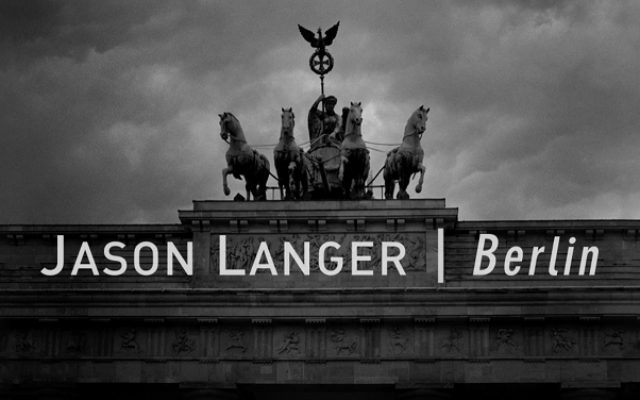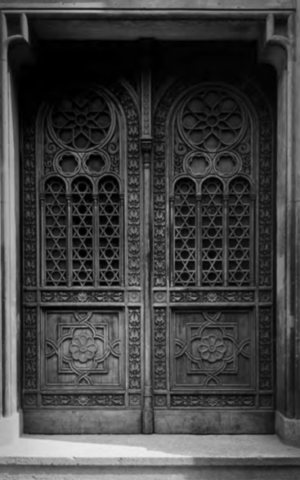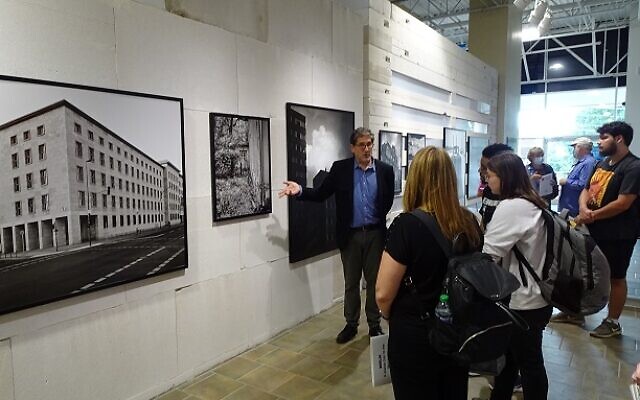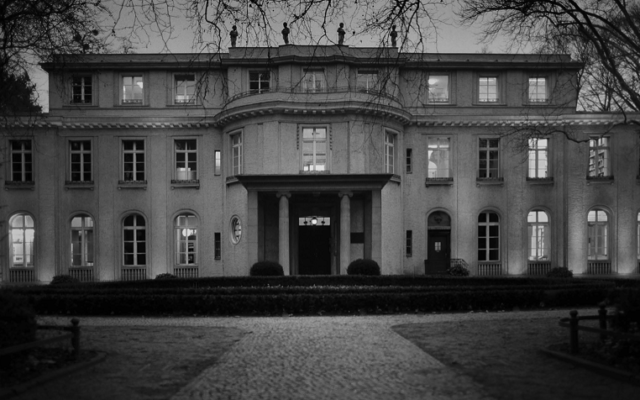KSU Photography Exhibit Examines Berlin’s Jewish Past
“Photographs by Jason Langer” is a highly personal examination of the role the city of Berlin played in the Holocaust.

A new photographic exhibit at Kennesaw State University features images of modern-day Berlin in an attempt to come to terms with the events of its Nazi past. In a series of often stark and sometimes haunting images, photographer Jason Langer attempts to examine not only the city’s history but his own inner conflict as a Jewish American artist who continually finds himself confronting the tragedy that took place there.
For Langer, the black-and-white images that constitute his exhibit, “Berlin: A Jewish Ode to the Metropolis,” are as much an exorcism of the evils that took place in the city as it is a meditation on what remains. That process, he noted in a recent interview, began in 1973, when his mother moved the family from the United States to kibbutz Mishmar HaEmek, a 30-minute drive from Haifa in northwest Israel.
It was there, he remembers, that he first encountered the iconic photo taken in 1943 of a terror-stricken boy in the Warsaw ghetto. In the photo, the boy’s hands are raised in surrender before armed Nazi soldiers. It was an image, Langer admits, that he was not able to get out of his mind.
“That picture haunted me when I was little,” Langer says. “I was only seven years old. But I really felt it and internalized it as a kid. A few years ago, when someone asked me to photograph Berlin, I was instantly brought back to those feelings about not only Germany and German people but thinking of Berlin as the seat of the Third Reich.”
The exhibit and a soon-to-be published book of his photographs serve as Langer’s attempts to come to terms with the fear he imagined the young boy was experiencing. Langer believes that in looking at such deeply moving images from the past, some of the trauma that the original victims of the Holocaust must have felt as they faced their death is transmitted.

“I think one of the main themes of the book is this idea of trans-generational trauma. Meaning, if you’re Jewish, you grow up with the knowledge of the Holocaust. And even though you may not have any family members who were directly touched by the Holocaust, still, it may be even written into our DNA. We Jewish people have a kind of response that we know we are always potentially in danger. And so that level of fear that I experienced when I was seven years old is probably very common.”
For five years, on frequent trips to Germany’s capital city, Langer crisscrossed the vast metropolis, with its nearly 4 million inhabitants spread out over 344 square miles, looking for revealing insights.
Among the most striking images are those of the remaining entranceways of a Berlin synagogue that survived the destruction of many of Germany’s Jewish houses of worship in November 1938, during the infamous Kristallnacht, which spelled the beginning of the end for German Jewry in Nazi Germany.
Adorned with its now-weather-beaten religious symbols, it stands in sharp and defiant contrast to the large portrait in the KSU exhibit of an elegant mansion on Berlin’s outskirts. In that imposing residence, in 1942, Nazi leaders met for a secret discussion to map out the “Final Solution” that would lead to the mass murder of six million Jews in Europe. After several hours, according to the official report, the Nazi bureaucrats enjoyed a lavish breakfast. It is that sense of history that Langer feels dominates his exhibit.

“My vision has a kind of surreal stillness. I think that that style is also especially pronounced because it views the city coming from a kind of caution. I am very, very aware that 80 years ago, people like me were being arrested and sent to Auschwitz.”
It is that awareness of the past that motivated writer Shelly Kupferberg to reflect on the “ghosts” that she imagines still inhabit the city. Kupferberg, who was born in Israel and grew up in Germany, had great-grandparents who were raised in pre-war Berlin and died in the Holocaust. The essay she contributed to the book upon which the exhibit is based is titled “Berlin: A Scarred City.” Like Langer, she finds herself challenged in trying to reconcile the city and its infamous past. For Kupferberg, the glittering facades of buildings and the other physical symbols of Germany’s economic and political resurgence cannot obscure the memories that are still present in the city.

“What today is seen as a silent witness,” she writes, “gets its ferocity mainly from knowing what happened here. Only in the moment of knowing can the abyss and the extent of it be sensed. Not understood, no, but sensed.”
Langer’s book, to be published in November 2022 by Kerber Verlag, is available through www.jasonlanger.com. “Berlin: A Jewish Ode to The Metropolis” is on view at Kennesaw State University’s Museum of History and Holocaust Education.



comments